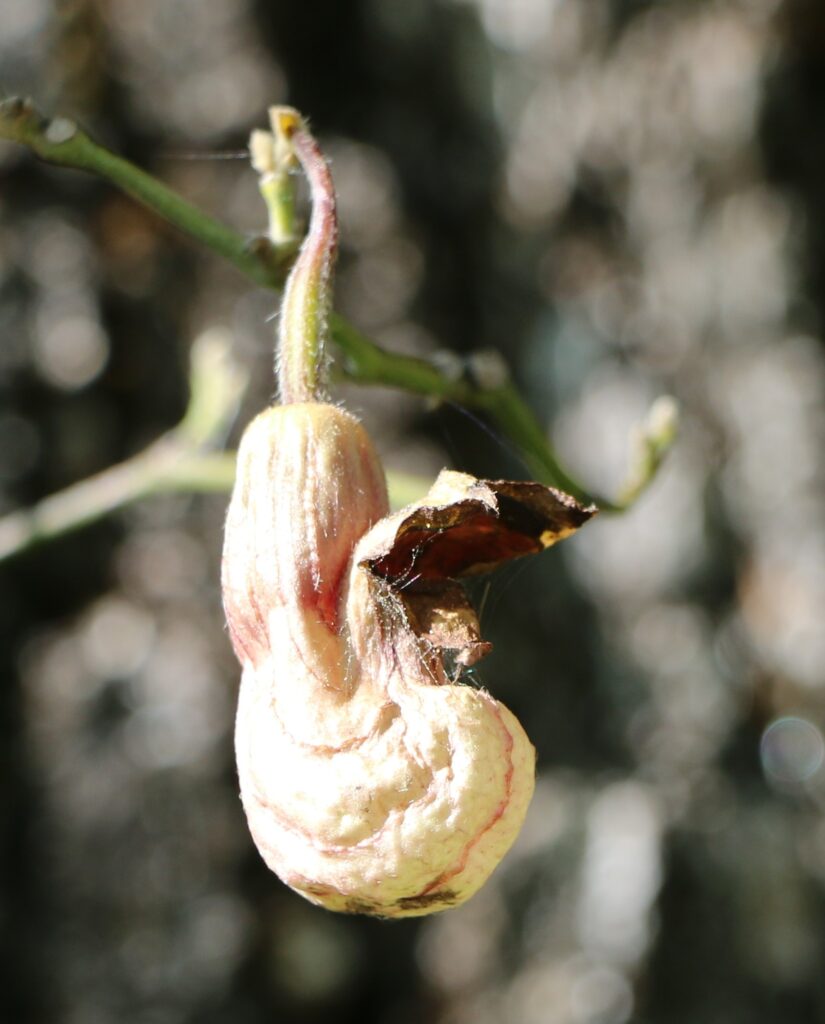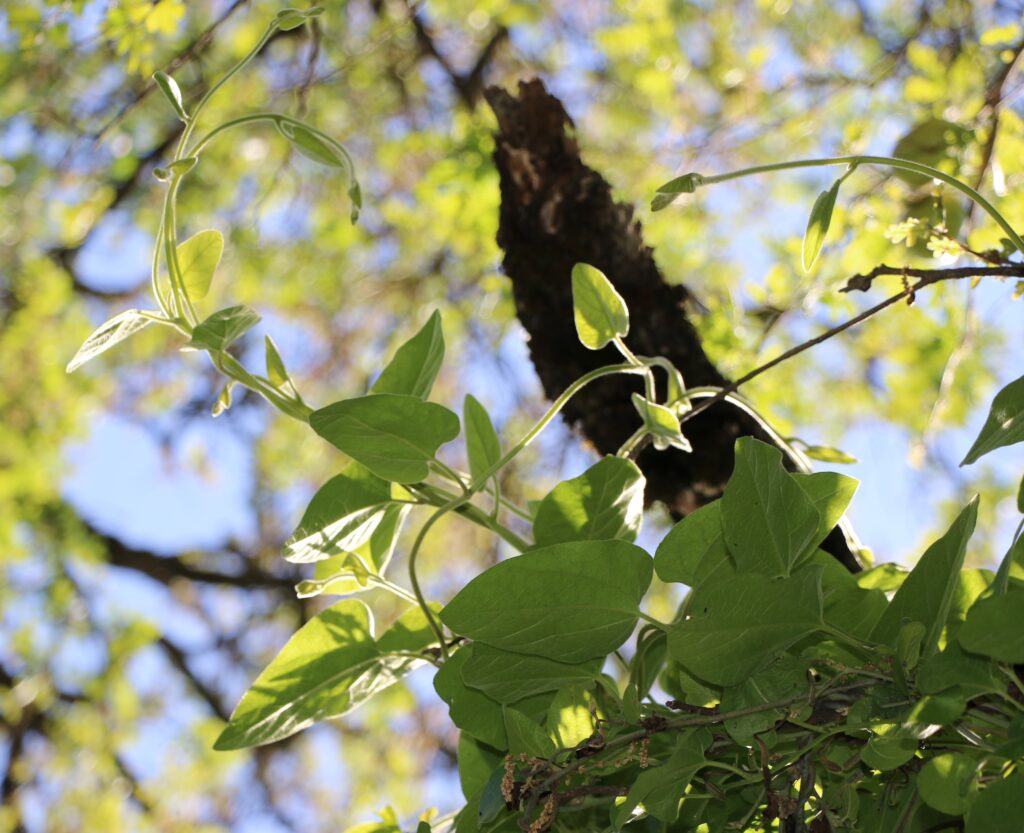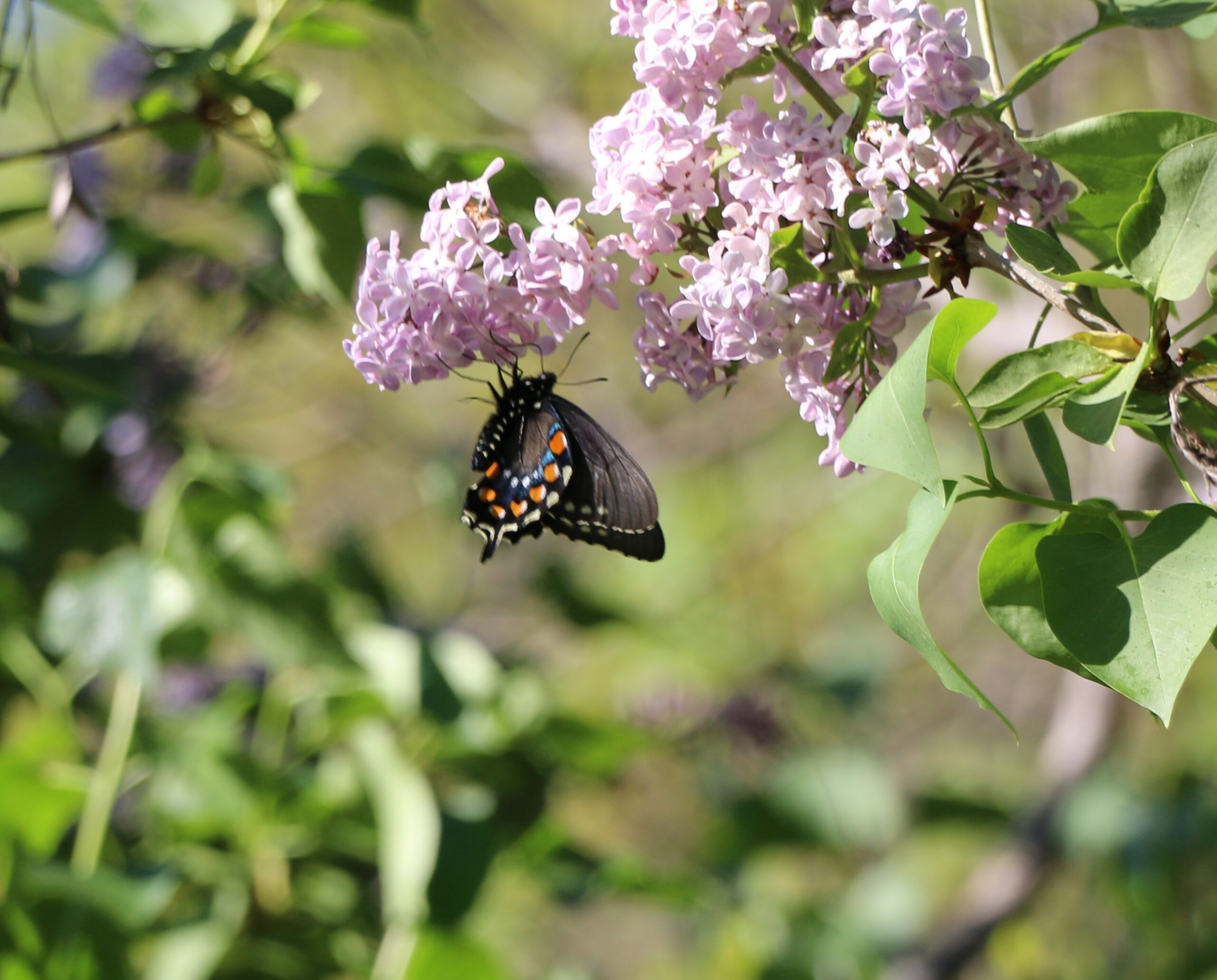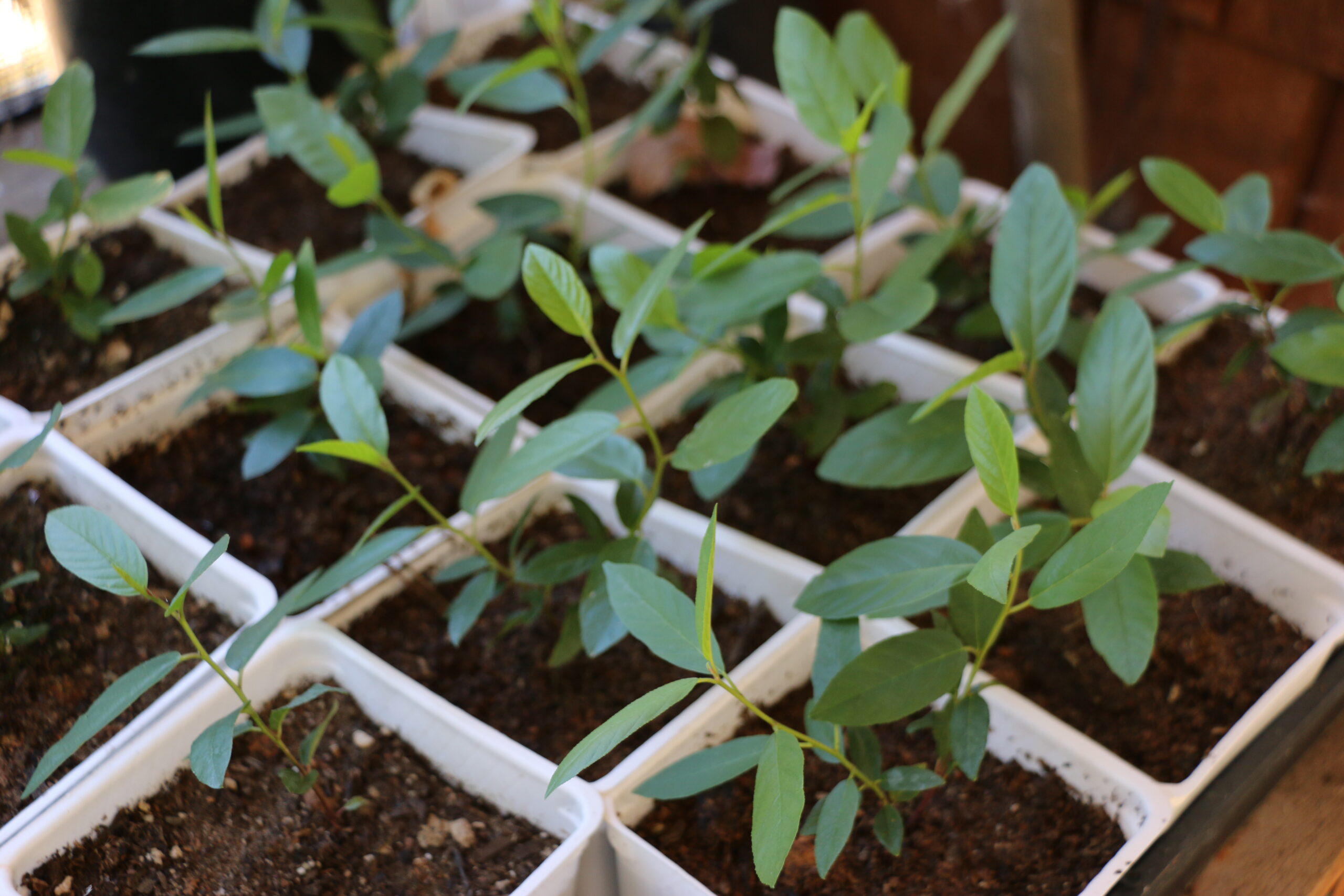April 21, 2024. Spring has come and the weather today is amazing – low 70’s, sunny with a light breeze. Everything is lush, and the garden is overrun with flowers. Our lilacs are coming into full bloom, the pink valerian is covered with bees and butterflies and the Spanish lavender is awash with bumblebees – and the occasional alligator lizard hunting them!
The swallowtails have returned in great numbers this year and right now it’s the Pipevine Swallowtail (Battus philenor) that has center stage.
This butterfly is probably the most distinctive of our California riparian butterflies. It is also one of the most specific species of butterflies as the larvae only feed on one plant – the California Pipevine (Aristolochia californica).

We have this native vine growing in a couple of places in the garden, climbing up into oaks in dappled shade. The flowers always come out before the foliage, usually in early March, and often we’ll get a freeze that puts an end to the display. Still, the foliage comes on strong as the weather warms.

In the wild I’ll find pipevine in the canyons, an understory species growing on north-facing slopes. The leaves are somewhat heart-shaped and a light chartreuse green when first coming out.
Although the butterfly has a wide distribution and, from the looks of our garden right now, a robust population, its dependency on this one plant species makes it vulnerable to habitat loss and fragmentation. Data on population does show a decline in the Sacramento region over the past 20 – 30 years.
So, it’s mid-April and yet there are butterflies galore. Wouldn’t this seem a bit odd, to have so many butterflies so early in the season? The pipevine swallowtail has a strange lifecycle. It overwinters as a pupa, and we have a large emergence in the early spring. Eggs are laid in clusters on the young, tender shoot tips of the host plant and this is what the larvae feed on. When they go into pupation some of them will stay in this state until next spring, some will emerge in a couple of weeks and finally, some will hatch out in late summer or early fall.
The butterflies produce toxic alkaloids. These are stored in the larvae and passed into the adult and transferred by the female into the eggs! The eggs are brick red, the larvae have red coloration, and the adults display warning coloration as well, thus giving them some protection from predators.
They are beautiful butterflies and are well worth encouraging into your garden. Plant pipevine for the larvae and California buckeye, yerba santa, thistles and milkweed for the adults. Also, lilacs and valerian are popular nectar sources. Enjoy this beautiful spring weekend.



